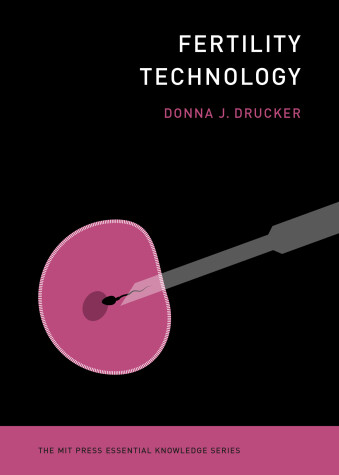The MIT Press Essential Knowledge
2 total works
The beginning of the modern contraceptive era began in 1882, when Dr. Aletta Jacobs opened the first birth control clinic in Amsterdam. The founding of this facility, and the clinical provision of contraception that it enabled, marked the moment when physicians started to take the prevention of pregnancy seriously as a medical concern. In this volume in the MIT Press Essential Knowledge series, Donna Drucker traces the history of modern contraception, outlining the development, manufacturing, and use of contraceptive methods from the opening of Dr. Jacobs's clinic to the present. Drucker approaches the subject from the perspective of reproductive justice: the right to have a child, the right not to have a child, and the right to parent children safely and healthily.
Drucker describes contraceptive methods available before the pill, including the diaphragm (dispensed at the Jacobs clinic) and condom, spermicidal jellies, and periodic abstinences. She looks at the development and dissemination of the pill and its chemical descendants; describes technological developments in such non-hormonal contraceptives as the cervical cap and timing methods (including the “rhythm method” favored by the Roman Catholic church); and explains the concept of reproductive justice. Finally, Drucker considers the future of contraception—the adaptations of existing methods, new forms of distribution, and ongoing efforts needed to support contraceptive access worldwide.
In the late 1850s, a physician in New York City used a syringe and glass tube to inject half a drop of sperm into a woman’s uterus, marking the first recorded instance of artificial insemination. From that day forward, doctors and scientists have turned to technology in ever more innovative ways to facilitate conception. Fertility Technology surveys this history in all its medical, practical, and ethical complexity, and offers a look at state-of-the-art fertility technology in various social and political contexts around the world.
Donna J. Drucker’s concise and eminently readable account introduces the five principal types of fertility technologies used in human reproduction—artificial insemination; ovulation timing; sperm, egg, and embryo freezing; in vitro fertilization; and IVF in uterine transplants—discussing the development, manufacture, dispersion, and use of each. Geographically, it focuses on countries where innovations have emerged and countries where these technologies most profoundly affect individuals and population policies. Drucker’s wide-ranging perspective reveals how these technologies, used for birth control as well as conception in many cases, have been critical in shaping the moral, practical, and political meaning of human life, kinship, and family in different nations and cultures since the mid-nineteenth century.

